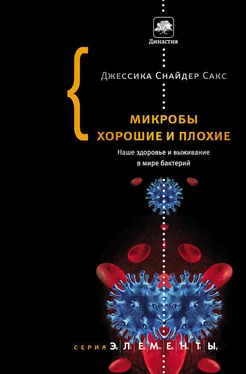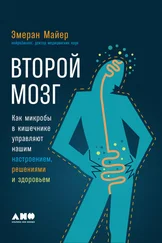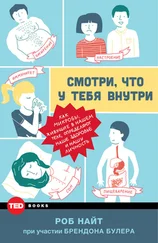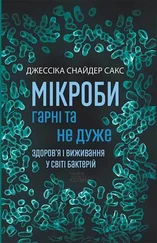64 The Dirt Vaccine (документальный фильм, показанный Би-би-си в 2002 г.), серия The Edge Series: Health and Medicine, Eco Services Film; Garry Hamilton, “Let Them Eat Dirt”, New Scientist, July 18, 1998; Susan McCarthy, “Talking Dirty and Bring on the Germs”, salon.com, April 2000.
65 Mary O’Brien et al., “SRL172 (Killed Mycobacterium vaccae) in Addition to Standard Chemotherapy Improves Quality of Life Without Affecting Survival, in Patients with Advanced Non-small-cell Lung Cancer: Phase III Results”, Annals of Oncology 15 (2004), 906–914.
66 John Stanford et al., “Successful Immunotherapy with Mycobacterium vaccae in the Treatment of Adenocarcinoma of the Lung”, European Journal of Cancer 44 (2008), 224–227.
67 11 апреля 2001 г. стоимость акций SR Pharma упала на 76,9 %. Это было самое сильное падение за этот день по данным индекса FTSE 100.
68 National Sweet Itch Centre, “Studies on the Prevention and Treatment of Sweet-Itch”, www.sweet-itch.co.uk/ trials.html.
69 Неопубликованные данные: John Stanford, Graham McIntyre (Centre for Infectious Diseases and International Health, University College London), 2006.
70 Claudia Zuany-Amorin et al., “Suppression of Airway Eosinophilia by Killed Mycobacterium vaccae-lnduced Allergen-Specific Regulatory T-cells”, Nature Medicine 8 (2002), 625–629; Victoria Adams et al., “Mycobacterium vaccae Induces a Population of Pulmonary CDiic (+) Cells with Regulatory Potential in Allergic Mice”, European Journal of Immunology 34 (2004), 631–638.
71 Неопубликованные данные: Graham Rook, 2006.
72 Fawziah Marra et al., “Does Antibiotic Exposure During Infancy Lead to Development of Asthma? A Systematic Review and Meta-analysis (of Seven Studies)”, Chest 129 (2006), 610–618.
73 Mairi Noverr et al., “Development of Allergic Airway Disease in Mice Following Antibiotic Therapy and Fungal Microbiota Increase: Role of Host Genetics, Antigen, and Interleukin-13”, Infection and Immunity 73 (2005), 30–38; Mairi Noverr, Gary Huffnagle, “Does the Microbiota Regulate Immune Responses Outside the Gut?” Trends in Microbiology 12 (2004), 562–568; Mairi Noverr, Gary Huffnagle, “Role of Antibiotics and Fungal Microbiota in Driving Pulmonary Allergic Responses”, Infection and Immunity 72 (2004), 4996–5003.
74 B. Laubereau et al., “Caesarean Section and Gastrointestinal Symptoms, Atopic Dermatitis, and Sensitisation During the First Year of Life”, Archives of Diseases of Children 89 (2004), 993–997.
75 A. C. Ouwehand et al., “Differences in Bifidobacterium Flora Composition in Allergic and Healthy Infants”, Journal of Allergy and Clinical Immunology 108 (2001), 144–145.
76 B. Björksten et al., “The Intestinal Microflora in Allergic Estonian and Swedish Infants”, Clinical and Experimental Allergy 29 (1999), 342346; E. Sepp et al., “Intestinal Microflora of Estonian and Swedish Infants”, Acta Paediatrica 86 (1997), 956–961.
77 Anita van den Biggelaar et al., “Long-Term Treatment of Intestinal Helminths In creases Mite Skin-Test Reactivity in Gabonese Schoolchildren”, Journal of Infectious Diseases 189 (2004), 892–900.
78 R. W. Summers et al., “Trichuris suis Therapy in Crohn’s Disease”, Gut 54 (2005), 87–90.
79 Charlotte Schubert, “The Worm Has Turned”, Nature Medicine 10 (2004), 1204–1271.
80 Christopher Lowry, “Functional Subsets of Serotonergic Neurones”, Journal of Neuroendocrinology 14 (2002), 911–923; Christopher
Lowry et al., “Modulation of Anxiety Circuits by Serotonergic Systems”, Stress 8 (2005), 233–246.
81 Rose-Marie Bluthe et al., “Central Injection of IL-10 Antagonizes the Behavioral Effects of Lipopolysaccharide in Rats”, Psychoneuroendocrinology 24 (1999), 301–311.
82 Marianne Wamboldt et al., “Familial Association Between Allergic Disorders and Depression in Adult Finnish Twins”, American Journal of Medical Genetics 96 (2000), 146–153.
83 M. Maes et al., “In Vitro Immunoregulatory Effects of Lithium in Healthy Volunteers”, Psychopharmacology 143 (1999), 401; Marta Kubera et al., “Anti-inflammatory Effects of Antidepressants Through Suppression of the Interferon-gamma / Interleukin-10 Production Ratio”, Journal of Clinical Psychopharmacology 21 (2001), 199–206; Brian Leonard, “The Immune System, Depression and the Action of Antidepressants”, Progress in Neuro-Psychopharmacology and Biological Psychiatry 25 (2001), 767–780; Sinead O’Brien et al.,
“Cytokines: Abnormalities in Major Depression and Implications for Pharmacological Treatment”, Human Psychopharmacology: Clinical and Experimental 19 (2004), 397–403; Nathalie Castanon et al., “Chronic Administration of Tianeptine Balances Lipopolysaccharide-Induced Expression of Cytokines in the Spleen and Hypothalamus of Rats”, Psychoneuroendocrinology 29 (2004), 778–790.
Часть 4. Микробы, подсевшие на лекарства
1 Эпиграф: Tom Nugent, “Resistance Fighter”, Pennsylvania Gazette, September – October 2000.
2 “New Germ Strain Takes Heavy Toll”, New York Times, March 22, 1958, 19.
3 Исследования показывают, что 20–30 % из нас – постоянные носители одного из штаммов золотистого стафилококка, живущего у нас в носоглотке. Еще 50–60 % периодически подхватывают и вновь теряют то один, то другой штамм этого микроба. И лишь 10–20 % счастливцев обходятся совсем без него. Имеются также данные, указывающие на то, что эта изменчивость связана с врожденными различиями в иммунных веществах, содержащихся в выделениях нашего носа. См.: J. Kluytmans et al., “Nasal Carriage of Staphylococcus aureus: Epidemiology, Underlying Mechanisms, and Associated Risks”, Clinical Microbiology Reviews 10 (1997), 505–520.
4 В 1957 и 1958 гг. младенческая смертность в США впервые с 1936 г. возросла: со 108 000 смертей (26,0 на тысячу живых новорожденных) в 1956 г. до 112 000 (26,3 на тысячу новорожденных) в 1957 г. и 114 000 (27,1 на тысячу) в 1958 г. Затем этот показатель вновь начал постепенно снижаться и стал ниже, чем был в 1956 г., в 1961 г. (25,3 на тысячу). U. S. Census Bureau, Live Births, Deaths, Infant Deaths, and Maternal Deaths: 1900 to 2001, Statistical Abstract No. HS-13. (По смертности, связанной с отдельными микробами, статистика отсутствует.)
5 M. Barber, “Methicillin-Resistant Staphylococci”, Journal of Clinical Pathology 1 (1963), 308–311.
6 Интервью, взятые автором у Хайнца Айхенвальда в январе 2005 г. и в августе 2006 г.
Читать дальше
Конец ознакомительного отрывка
Купить книгу


![Джордж Оруэлл - Хорошие плохие книги [сборник]](/books/33144/dzhordzh-oruell-horoshie-plohie-knigi-sbornik-thumb.webp)









